The age-old adage of “Numbers don’t lie” rings true when starting your agency, thanks to the power of agency metrics. After all, this data shows how you can optimize your company’s performance, especially in a market with cutthroat competition.
Data makes our digital world go round, so much so that a report by Forrester claims that data-driven businesses are poised to grow 30% annually, outperforming their competitors.
Forbes has also made a similar claim on the benefits of using data-driven strategies to stay ahead, as these companies generate up to 3 times more revenues than their underperforming counterparts.
In this blog, we’ll explore the world of agency metrics in-depth, covering their benchmarking and vital formulas to remember. Read on to find out more!
How to Benchmark Agency Metrics
Here’s how you can benchmark agency KPIs:
Compare performance against industry averages
Having an idea of the typical performance in your industry helps you compare your performance against industry averages. Doing so provides additional context when analyzing your agency’s performance.
Identify areas for improvement
Metrics help you identify where you stand. Are you faring well when it comes to our sales strategies? Perhaps you are excelling in customer satisfaction but facing challenges in employee satisfaction.
Knowing more about these targets helps you identify your weakest links just as much as your strongest assets. Plus, it allows you to create your own strategy to work on these improvement areas.
Set realistic targets and goals
Goals are supposed to be SMART (Specific, Measurable, Attainable, Realistic, and Time-Bound). Emphasizing the ‘R’ for realistic is crucial when scaling up your marketing agency. Avoid setting goals that veer from reality, or else you could just be setting yourself up for failure.
The best strategy is to start small but not too small to the point that your benchmarks are easily attainable. As time goes on, move the goalposts a little higher, depending on the growth rate of your agency.
30 Types of Agency Metrics
You’re bound to find these 30 agency performance metrics helpful when growing your agency. Find out more about them below:
Sales Department
Let’s explore the different marketing agency metrics involved in the sales department:
1. Revenue Growth
Your revenue is one of the biggest indicators of your agency’s financial health. However, in a vacuum, your revenue for a specified time frame doesn’t say much about your sales.
That’s why we calculate the revenue growth and revenue growth rate – to determine how well your agency is expanding over time. Here’s how you can calculate them:
How to Calculate Revenue Growth:
Revenue Growth = Current Revenue – Initial Revenue
How to Calculate Revenue Growth Rate:
Revenue Growth Rate = 100 × (Current Revenue – Initial Revenue)/Initial Revenue)
Note that a negative figure implies revenue loss. In this case, you might have to re-evaluate your business strategies.
Prospecting On Demand can assist your agency in generating an MRR of 6 or 7 figures. Participating in our mentorship programs allows you to find new ways to help you reach your business objectives.
2. Customer Acquisition Cost (CAC)
A CAC can be calculated by how much your agency spends to gain new customers. Typically, this will involve your marketing and sales expenses, and this metric provides more insight into the effectiveness of your sales and marketing strategies. You can calculate your CAC with the formula below:
Customer Acquisition Cost Formula:
CAC = (Total Marketing and Sales Expenses)/(Number of New Customers Acquired Within a Specific Period)
3. Customer Lifetime Value (CLV)
You can actually calculate the total revenue you can expect from a single customer throughout your relationship. The formula considers their purchasing frequency, churn rate, and average spend per transaction. Calculate your agency’s CLV here:
Customer Lifetime Value Formula:
CLV= (Average Purchase Value x Purchase Frequency)/Churn Rate
Remember that a high churn rate decreases your CLV, reducing the revenue a customer brings to your business. Working on tailored retention strategies should help in increasing this critical agency metric. Later on, we’ll touch on the topic of churn rate with more depth.
4. Leads Generated
When a potential client expresses interest in your agency’s services, they are considered a lead. If they provide their contact information, that’s a bonus.
Several ways to increase this number include creating engaging content, building rapport with prospects, and optimizing your website.
5. Sales Conversion Rate
Not all leads result in a conversion, so you must calculate your sales conversion rate. One way to boost your sales conversion rate is to know your service – know your value proposition by heart and provide clear information that resonates with your leads.
6. Win Rate
The key to an excellent win rate is to train your sales team on effective communication and sales pitching skills. You can calculate your win rate with the formula below:
WR = 100 × (Closed-Won Deals)/(Closed-Won Deals + Lost Deals)
7. Meetings Booked and Attended
Have you taken note of the actual attendance of your scheduled meetings? With this metric, you can assess the effectiveness of your outreach efforts.
If you want to increase this number, find new ways to simplify your scheduling process or even consider incentivizing potential clients.
8. Lead Value
A lead value provides a monetary value to each lead, should they convert and bring revenue to your business. By analyzing this metric, you allocate your resources more effectively – prioritizing leads with high lead values.
Remember: focus on the most valuable opportunities, but don’t forget to continue forging relationships with other leads that might not currently have a high lead value. Who knows, they could bring bigger opportunities in the future.
9. Average Deal Size
The average deal size is precisely what you think – the typical monetary value of a closed deal. Calculating this provides deeper insights into your ability to close large transactions, contributing to higher revenue.
A consistently high deal size can mean many things. First, you have effective upselling and cross-selling strategies, convincing leads of your value proposition. Second, it could mean that you are successful in targeting high-value clients.
10. Cost Per Lead
For every lead, there is a cost associated with acquiring them. Your main goal is to reduce this figure to a value as low as possible without sacrificing your service quality.
To start, you can adjust your ad campaigns and gear them more toward your target demographic.
Here’s the Cost Per Lead Formula:
Cost Per Lead = (Total Marketing and Sales Expenses)/Number of Leads Generated
11. Qualified Sales Opportunities
A qualified sales opportunity is a lead likely to convert based on established criteria. For example, if your services meet a client’s budget requirements, that can count as one of the criteria for a qualified sales opportunity.
12. Marketing Qualified Leads (MQLs)
A marketing qualified lead (MQL) is similar to a qualified sales opportunity as they both provide information on leads who are likely to become customers.
The difference lies in the stage of the buyer’s journey. MQLs fall earlier in the buying journey as they have shown interest in your service through marketing efforts, such as downloading content.
Meanwhile, a QSO is a bit further in the buying journey. They have engaged with marketing efforts and display other characteristics that indicate that they are likely to become customers.
13. Average Revenue Per Customer
The average revenue generated by each customer over a specified period is known as the average revenue per customer. A higher figure often means effective upselling or cross-selling, which brings us to our next points.
14. Upsell Rate
Upselling is defined as the sales strategy of encouraging customers to purchase an upgraded version of a product. Hence, the upsell rate determines how successful your efforts are in encouraging clients to choose high-value offerings.
15. Cross-Sell Rate
Cross-selling is a type of strategy that encourages users to avail of additional services other than their initial purchase.
By offering services that complement their initial purchase, you can raise this figure to increase the total value of a customer’s transaction, bringing in more revenue for your agency.
Marketing Department
Now that we’ve discussed all the metrics that fall under the sales department, we’ll move forward with the metrics in the marketing department:
16. Website Traffic
Your website acts as your digital image and is your first point of contact, helping you gain new clients. Website traffic refers to the number of people who visit your webpage.
By watching this metric, you better understand how effectively your digital presence attracts visitors.
Engagement Rate
Simply visiting your website and social media pages will not increase conversions. That’s why your engagement rate is one of the website metrics that matter.
Instead of focusing on the quantity of interactions, this metric provides insight into the quality of user interactions.
Remember that this metric is particularly relevant to posts on your socials. You can calculate your engagement rate with the formula below:
How to Calculate Engagement Rate
Engagement Rate = (Number of likes, comments, shares, or other interactions)/(Number of Impressions)
17. Follower Growth Rate
If you have an effective marketing strategy, such as consistently creating compelling content, you’ll likely see an increase in your follower growth rate. Compute it with this simple formula below:
Follower Growth Rate = (Current Number of Followers – Initial Number of Followers)/(Current Number of Followers)
18. Churn Rate
A simple definition of churn rate is the rate at which clients end their business relationship with your agency. As much as possible, you’ll want to minimize this number.
Churn Rate Formula
Churn Rate = 100 × (Lost Number of Clients)/(Total Number of Clients at the Beginning of a Time Period)
19. Cost Per Click
Measuring your cost per click (CPC) gives you a better idea of the cost incurred for each click on an advertisement. This formula must comprise costs spent on ads and crafting their content.
You’ll have to create more targeted ad campaigns and focus on quality to optimize this metric. You’ll find the formula for CPC below:
Cost Per Click Formula
CPC = (Total Cost)/(Number of Clicks)
20. Cost Per View
The same principle applies to Cost Per View as with Cost Per Click. All you have to do is determine the total cost of your video ad and divide this by the total view count.
21. Net Promoter Score (NPS)
NPS is a metric that reflects the chances that your clients will likely recommend your service to others.
To find your NPS, create a survey and group your respondents according to promoters, neutrals, and detractors. This formula calculates your NPS:
NPS = % Promoters – % Detractors
Finance Department
Let’s move on to the metrics that matter in the finance department.
22. Net Profit Margin
Your net profit margin is reflected by calculating the percentage of profit your agency retains after deducting all expenses, including taxes and operational expenses. You can calculate with the formula below:
Net Profit Margin Formula
Net Profit Margin = 100 × Net Profit/Revenue
23. Gross Profit Margin
Calculating your gross profit margin is almost like calculating your net profit margin, except you’ll have to tweak the formula to arrive at this figure.
Gross Profit Margin Formula
Gross Profit Margin = 100 × Gross Profit/Revenue
Gross Margin vs. Gross Profit
The difference between gross margin and gross profit is pretty simple. Your gross margin is expressed as a percentage of your revenue. In contrast, your gross profit is expressed in absolute terms.
Let’s take a look at a quick example below.
Gross Profit = $50000
Revenue = $100000
Gross Margin = 100 × 50000/100000
Gross Margin = 50%
Want to learn more? Visit our complete guide about digital marketing agency profit margins.
24. Discounted Cash Flow
The discounted cash flow is used to evaluate the attractiveness of an investment. The method is used to estimate the value of an investment’s future cash flow, considering the time value of money.
25. Operating Cash Flow
Your operating cash flow reflects your company’s ability to generate cash from your business. This metric includes cash from sales, vendor payments, and operational expenses.
26. Levered Free Cash Flow
Meanwhile, the levered free cash flow (LCF) refers to the cash available after meeting all your financial obligations. The LCF can tell you more about your agency’s ability to expand while repaying debts.
27. Current Ratio
A current ratio provides perspective into your ability to cover your liabilities with your assets. Calculate this metric with the formula below:
Current Ratio Formula
Current Ratio = Total Assets/Total Liabilities
Quick Ratio vs Current Ratio
Quick ratio uses a formula similar to the current ratio. However, the difference lies in the type of assets used. When calculating the quick ratio, you only consider assets that can be easily liquidated into cash. An asset that does not meet this requirement is your inventory.
According to Trevor Fillo, a Senior Account Manager at the Business Development Bank of Canada, banks deem a ratio of 1.2 or higher to be acceptable. Hence, meeting this standard is essential for agencies looking to secure financing.
Human Resources (HR) Department
Lastly, we’ll cover the metrics under the HR department.
28. Resource Utilization Rate
A resource utilization rate is extremely telling about the efficiency of how resources are being used. To improve this metric, simplify your agency processes and operations.
29. Employee Satisfaction Metrics
Customers aren’t the only people you must satisfy; don’t forget your employees. Positive metrics indicate a healthy working environment, which all employees seek in their careers.
30. Turnover Rate
Bigger isn’t better – that’s the case for your turnover rate. A high turnover rate indicates underlying issues within your agency. Some reasons include an unhealthy working environment, lack of opportunities, or substandard compensation. Conduct exit interviews to understand this better.
How to Calculate Turnover Rate
Turnover Rate = 100 × Number of Employees Departed/Average Number of Employees
Frequently Asked Questions (FAQs)
Find more about commonly asked questions on agency metrics below:
What aspect of your advertising is it vital to measure?
Measuring the engagement rate and conversion rate of your ad campaigns can determine their effectiveness. Alternatively, you can calculate your return on investment (ROI) with the following formula:
ROI = 100 × Net Return/Total Investment on Advertising
What is the metric that companies use as their primary focus for growth?
The metric that companies use as their primary focus for growth depends on their business model and objectives.
For example, if Agency A is focused on expanding its client base, it will focus on Customer Acquisition Costs. Conversely, Agency B, which has a significant client base, might prioritize Customer Lifetime Value.
What do most companies measure to determine the success of their websites?
Most companies measure both website traffic and conversion rates to determine the success of their websites. Again, it isn’t enough to measure web traffic as conversion or engagement rates add an extra layer to the story.
Which metric is used to measure efficiency in sponsored ad campaigns?
The click-through rate is the metric used to measure the efficiency of sponsored ad campaigns. The CTR calculates the percentage of users who click an ad compared to the total number of users who view it, providing context into the efficiency of an ad campaign.
What two vital metrics do marketers use to evaluate profitability?
Marketers use Customer Lifetime Value and Customer Acquisition Cost to evaluate their profitability metrics. By knowing the potential lifetime value of a customer, you determine profitable customer segments and forecast the future revenue generated by a customer.
Using the Customer Acquisition Cost is an excellent barometer for profitability as it evaluates the effectiveness of acquisition strategies and assists in making informed decisions about resource allocation.
Comparing these two metrics against each other, a business can assess the ROI of acquiring a new customer. Keep in mind that a lower CAC relative to CLV implies a profitable outlook.
Conclusion
That concludes our guide on the different agency metrics to monitor the strengths and weaknesses of your agency. By thoroughly understanding these metrics, you can set realistic goals and implement strategies to help your agency thrive.
As you optimize your agency’s performance, seeking expert guidance will help you go far and beyond. At Prospecting On Demand, our industry experts are ready to partner with you on your journey to success. Schedule a free assessment today!








